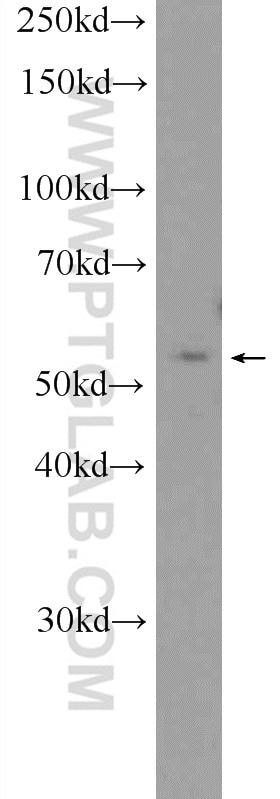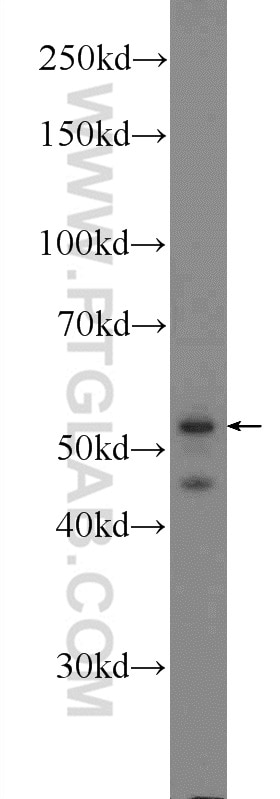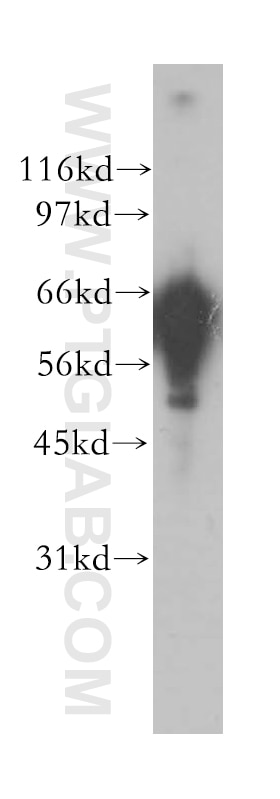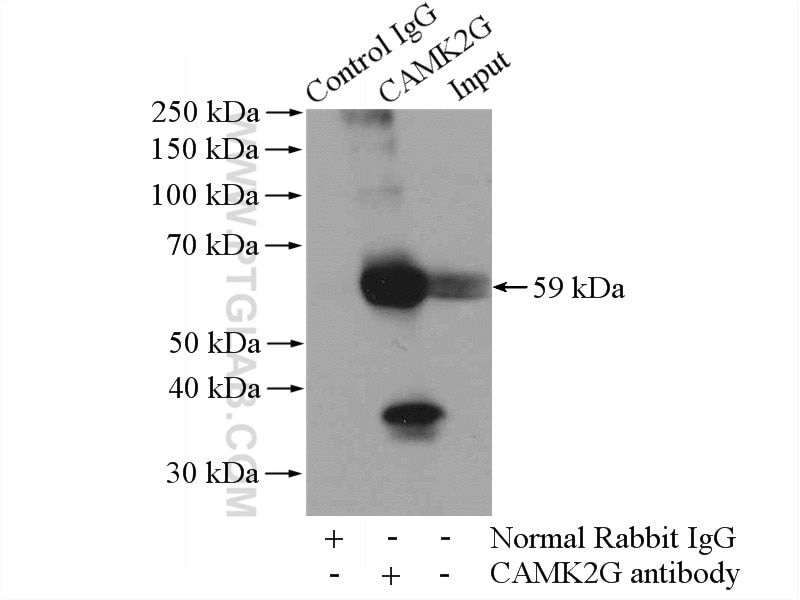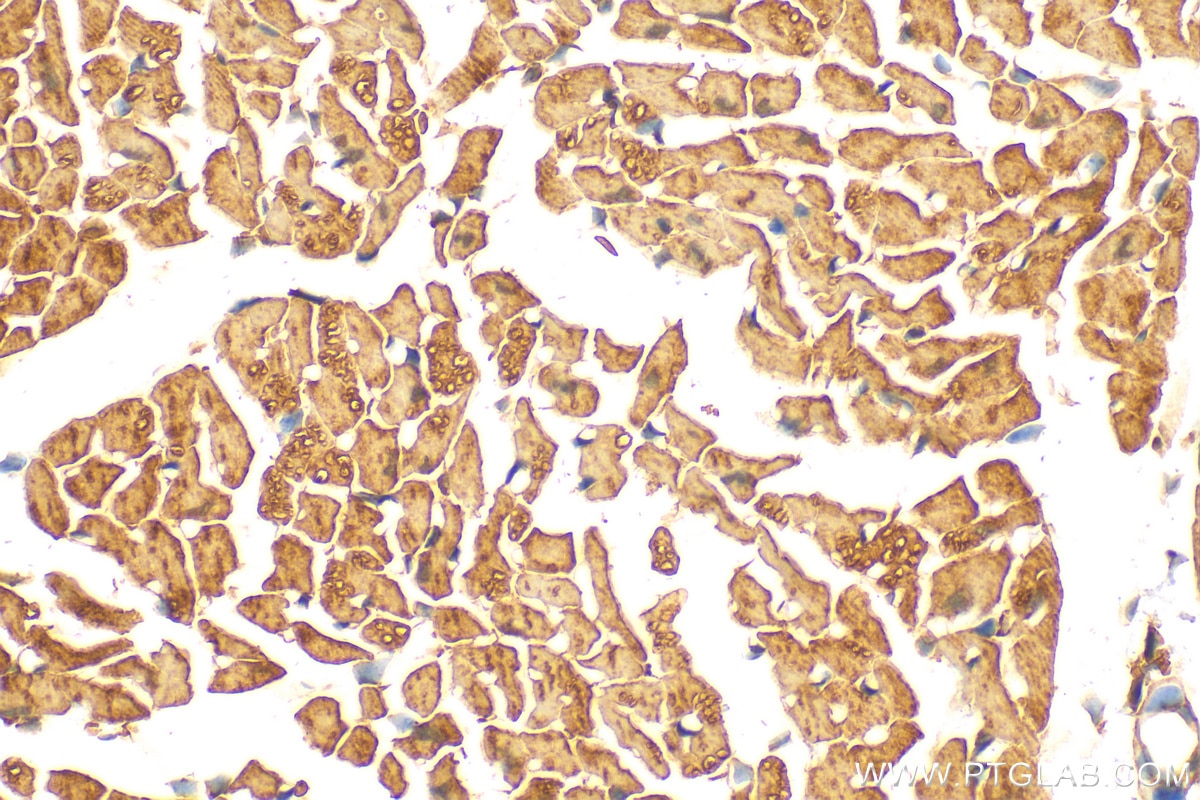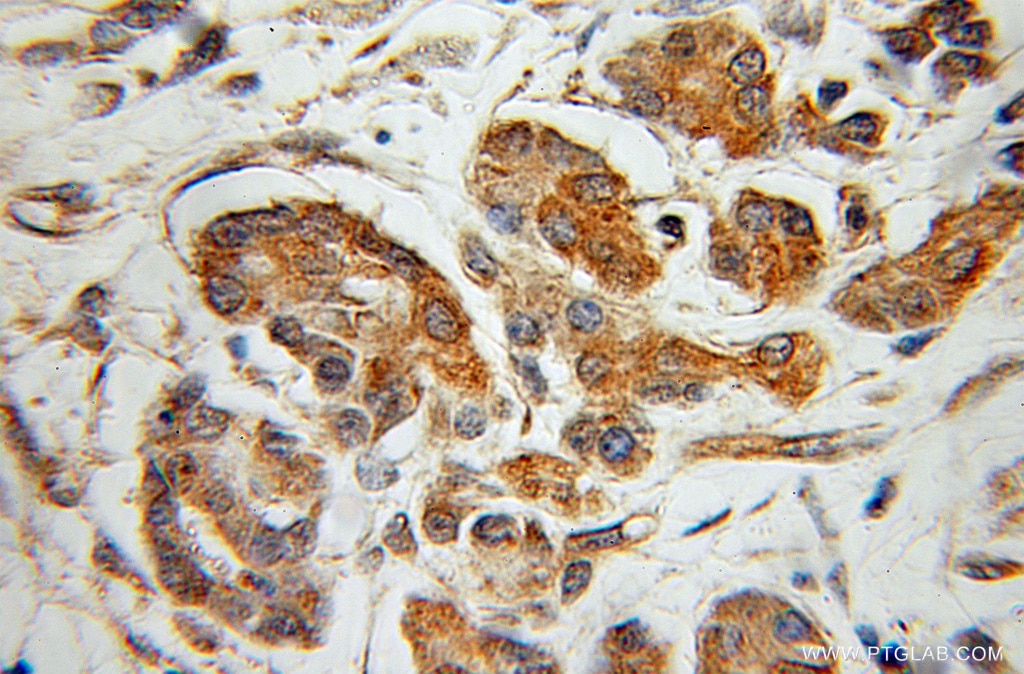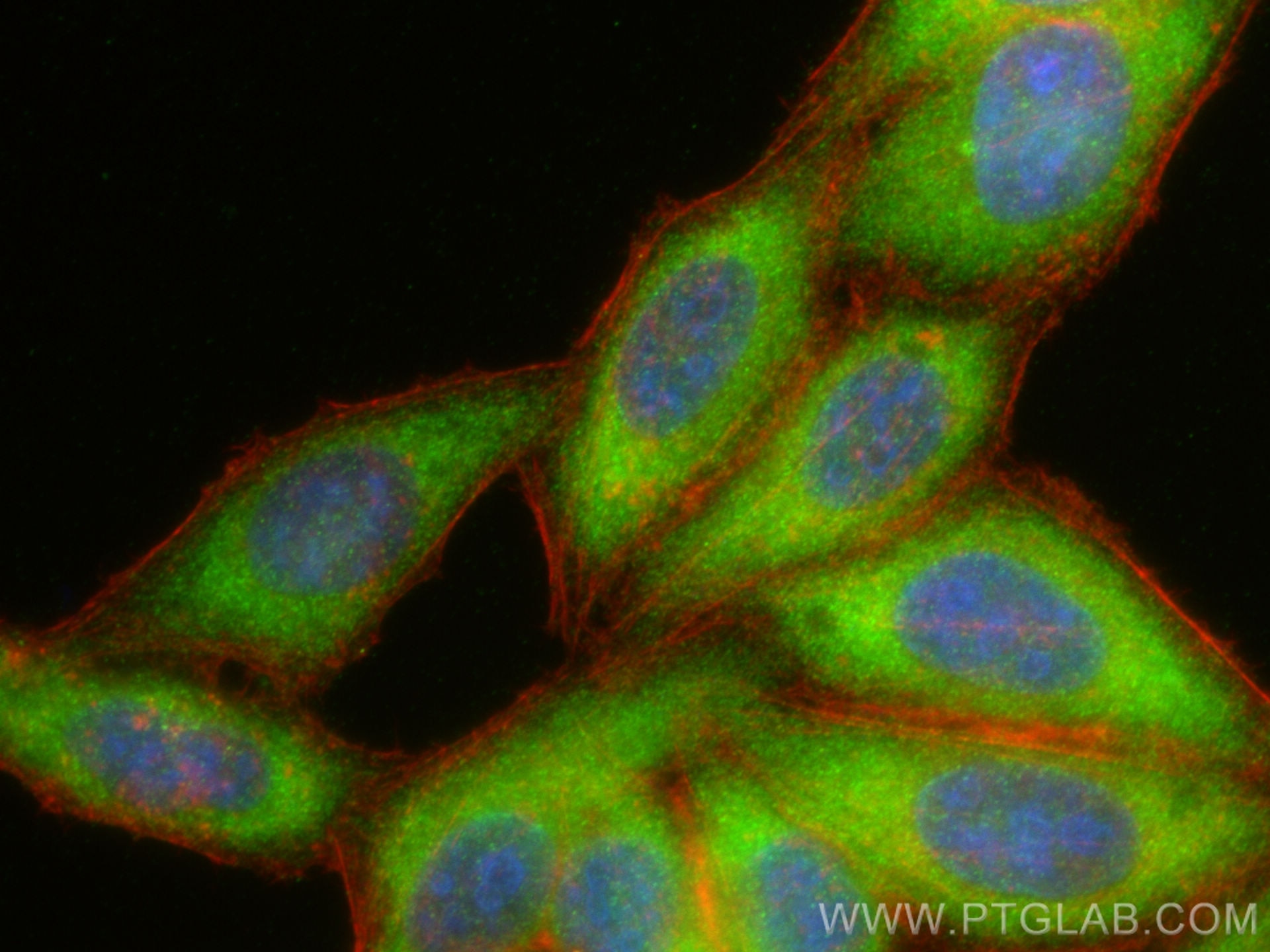- Featured Product
- KD/KO Validated
CaMKII Gamma Polyklonaler Antikörper
CaMKII Gamma Polyklonal Antikörper für WB, IHC, IF/ICC, IP, ELISA
Wirt / Isotyp
Kaninchen / IgG
Getestete Reaktivität
human, Maus, Ratte
Anwendung
WB, IHC, IF/ICC, IP, ELISA
Konjugation
Unkonjugiert
Kat-Nr. : 12666-2-AP
Synonyme
Geprüfte Anwendungen
| Erfolgreiche Detektion in WB | SMMC-7721-Zellen, humanes Hirngewebe |
| Erfolgreiche IP | Mausherzgewebe |
| Erfolgreiche Detektion in IHC | Mausherzgewebe, humanes Pankreaskarzinomgewebe Hinweis: Antigendemaskierung mit TE-Puffer pH 9,0 empfohlen. (*) Wahlweise kann die Antigendemaskierung auch mit Citratpuffer pH 6,0 erfolgen. |
| Erfolgreiche Detektion in IF/ICC | HepG2-Zellen |
Empfohlene Verdünnung
| Anwendung | Verdünnung |
|---|---|
| Western Blot (WB) | WB : 1:1000-1:4000 |
| Immunpräzipitation (IP) | IP : 0.5-4.0 ug for 1.0-3.0 mg of total protein lysate |
| Immunhistochemie (IHC) | IHC : 1:50-1:500 |
| Immunfluoreszenz (IF)/ICC | IF/ICC : 1:200-1:800 |
| It is recommended that this reagent should be titrated in each testing system to obtain optimal results. | |
| Sample-dependent, check data in validation data gallery | |
Veröffentlichte Anwendungen
| KD/KO | See 1 publications below |
| WB | See 27 publications below |
| IHC | See 2 publications below |
| IF | See 3 publications below |
| IP | See 1 publications below |
Produktinformation
12666-2-AP bindet in WB, IHC, IF/ICC, IP, ELISA CaMKII Gamma und zeigt Reaktivität mit human, Maus, Ratten
| Getestete Reaktivität | human, Maus, Ratte |
| In Publikationen genannte Reaktivität | human, Maus, Ratte |
| Wirt / Isotyp | Kaninchen / IgG |
| Klonalität | Polyklonal |
| Typ | Antikörper |
| Immunogen | CaMKII Gamma fusion protein Ag3348 |
| Vollständiger Name | calcium/calmodulin-dependent protein kinase II gamma |
| Berechnetes Molekulargewicht | 527 aa, 59 kDa |
| Beobachtetes Molekulargewicht | 59 kDa |
| GenBank-Zugangsnummer | BC034044 |
| Gene symbol | CAMK2G |
| Gene ID (NCBI) | 818 |
| Konjugation | Unkonjugiert |
| Form | Liquid |
| Reinigungsmethode | Antigen-Affinitätsreinigung |
| Lagerungspuffer | PBS with 0.02% sodium azide and 50% glycerol |
| Lagerungsbedingungen | Bei -20°C lagern. Nach dem Versand ein Jahr lang stabil Aliquotieren ist bei -20oC Lagerung nicht notwendig. 20ul Größen enthalten 0,1% BSA. |
Hintergrundinformationen
CaMKII gamma, also named CAMKG or CAMK2G, belongs to the protein kinase superfamily, CAMK Ser/Thr protein kinase family, and CaMK subfamily. CAMK2 is a prominent kinase in the central nervous system that may function in long-term potentiation and neurotransmitter release. CAMK2G is expressed in human beta cells as a candidate gene for Type II (non-insulin-dependent) diabetes mellitus. Some studies can be used to assess the role of CAMK2G in the susceptibility to Type II diabetes(PMID: 12032636). CAMK2G has some isoforms with the MW of 55-66 kDa and this antibody can recognize all the isoforms of CAMK2G. This antibody may have cross-reaction with CAMK2A/B/D due to the high homology.
Protokolle
| PRODUKTSPEZIFISCHE PROTOKOLLE | |
|---|---|
| WB protocol for CaMKII Gamma antibody 12666-2-AP | Protokoll herunterladen |
| IHC protocol for CaMKII Gamma antibody 12666-2-AP | Protokoll herunterladenl |
| IF protocol for CaMKII Gamma antibody 12666-2-AP | Protokoll herunterladen |
| IP protocol for CaMKII Gamma antibody 12666-2-AP | Protokoll herunterladen |
| STANDARD-PROTOKOLLE | |
|---|---|
| Klicken Sie hier, um unsere Standardprotokolle anzuzeigen |
Publikationen
| Species | Application | Title |
|---|---|---|
Neuron JAKMIP1, a Novel Regulator of Neuronal Translation, Modulates Synaptic Function and Autistic-like Behaviors in Mouse. | ||
Adv Healthc Mater Bioelectrically Reprogramming Hydrogels Rejuvenate Vascularized Bone Regeneration in Senescence | ||
Transl Res Cardiac-Specific Overexpression of CREM-IbΔC-X via CRISPR/Cas9 in Mice Presents a New Model of Atrial Cardiomyopathy with Spontaneous Atrial Fibrillation | ||
Oncotarget PIWIL1 destabilizes microtubule by suppressing phosphorylation at Ser16 and RLIM-mediated degradation of Stathmin1. | ||
Development Calmodulin-dependent protein kinase gamma 3 (CamKIIgamma3) mediates the cell cycle resumption of metaphase II eggs in mouse. | ||
Aging (Albany NY) CAMKIIγ is a targetable driver of multiple myeloma through CaMKIIγ/ Stat3 axis.
|
